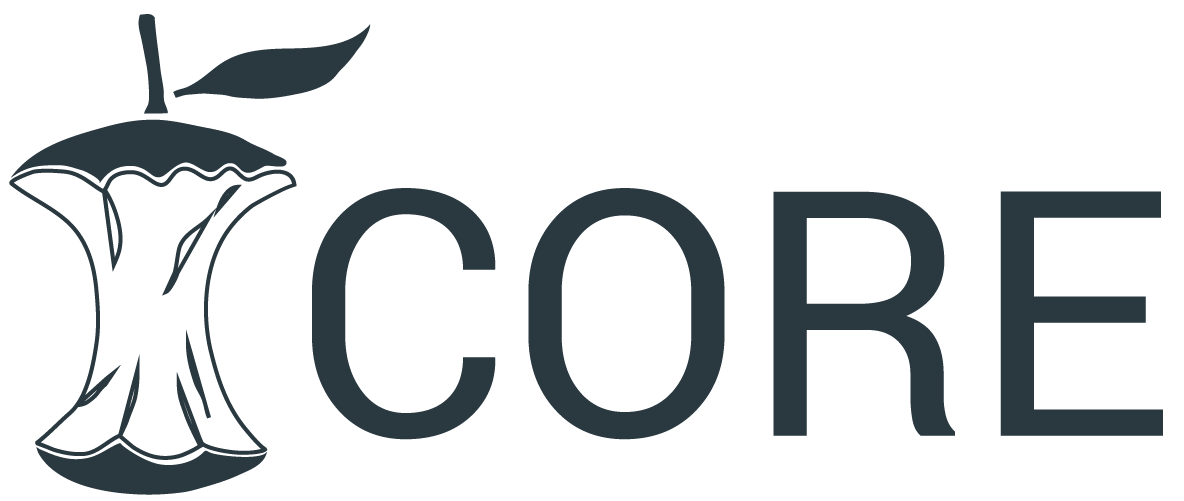Information For Authors
Interested in submitting to this press? We recommend that you review the About the Press page for the press' section policies and Author Guidelines. Authors need to register with the press prior to submitting, or if already registered can simply log in and begin the 5 step process.
Expected structure for book chapters
TITLE IN SPANISH
TITLE IN ENGLISH
The title must be presented in both Spanish and English, contain a maximum of 18 words (excluding connectors), be concise, and clearly express the content. It must not include trade names, abbreviations, time periods, or specific institutional names.
Author(s): Each author must provide their full name, with last name(s) first followed by given name(s), e.g., Briceño Carrasquel, Jorge Alexander.
Institution/Department/Country: Provide affiliation details, e.g., Universidad Estatal de Bolívar, Vice-Rectorate of Research and Engagement, Ecuador.
Email: Provide a valid email address for each author.
ORCID Author 1: e.g., https://orcid.org/0000-0002-0692-1228
Repeat as necessary for all authors.
Corresponding Author Email: Must belong to one of the authors listed.
Author information is provided solely for the editorial board. During the peer-review process, this information will be omitted.
ABSTRACT
The abstract should be between 250 and 400 words, written in an impersonal style, in a single paragraph, and clearly summarize all sections of the work. It should follow the structure: introduction, methodology/methods, results/analysis, and discussion. Avoid abbreviations, acronyms, references, or including information or conclusions not present in the manuscript.
Keywords: Include 4 to 6 descriptors, preferably selected from the THESAURUS – UNESCO. List them in alphabetical order, separated by semicolons.
INTRODUCTION
The introduction should precisely address the central problem of the study, including objectives or hypotheses to be tested. Background information should be supported by recent and relevant peer-reviewed literature. Clearly establish the purpose and rationale for the study, what is expected to be obtained, and the perspective from which the topic is approached.
Start with a general presentation of the study topic, emphasizing the problem, its consequences, possible solutions, and contextual contrasts. Justify the need to address the problem logically leading to the study objective. The introduction should conclude with a summary explicitly stating the research objective, which must match the one expressed in the abstract.
The introduction should not be overly theoretical. Maintain a logical flow from general to specific and briefly explain the variables or categories under study. It should be clear, concise, and well-structured.
METHODOLOGY / METHODS
(Use “METHODOLOGY” for original chapters and “METHODS” for review chapters.)
Justify the study’s approach, scope, and design, citing relevant authors without theorizing about them. Avoid operationalizing variables or explaining sampling formulas.
It is not necessary to provide theoretical explanations of techniques, methods, or research designs; simply mention them and support them with appropriate citations. Describe instruments in detail (origin, validity, reliability), studied population, sampling techniques or strategies, procedures, software used, and ethical considerations when applicable.
Materials, procedures, units of measurement, and statistical treatments should be described so that any researcher can reproduce the study. Laboratory methods must be detailed enough for replication; for standard procedures, references to the literature are sufficient.
RESULTS AND DISCUSSION / ANALYSIS
(Use “RESULTS AND DISCUSSION” for original chapters and “ANALYSIS” for review chapters.)
Present results (original chapters) or analysis (review chapters) in an organized manner. Use subheadings if necessary to improve clarity. Results/analysis should be clear, objective, impartial, and aligned with the methodology/methods. Avoid redundancy in tables or figures.
Interpret the meaning of results or analysis, comparing them with previous studies, highlighting similarities or differences, and analyzing possible causes of discrepancies. Avoid simply describing tables or figures; focus on interpretation and complement with updated references.
Provide a general understanding of results, explain implications, and compare with previous research. Include at least 10 bibliographic references in this section.
After the analysis, describe study limitations, significance, and possible future research directions.
CONCLUSIONS
The first paragraph should directly address the study objective. Based on previous discussion, present the general conclusions. Do not include statistical results or citations. Conclusions should be precise, highlighting the study’s contributions supported by demonstrable and verifiable results. Avoid concluding on untested aspects.
ACKNOWLEDGMENTS
Acknowledge public or private entities that provided research funding, including project numbers, resolutions, etc. Clearly indicate funding sources. Priority is given to works supported by competitive national or international projects. Acknowledge non-author contributors who assisted in the research.
DATA AVAILABILITY
To promote transparency, reproducibility, and validation, authors must make data supporting the results publicly available.
Include a statement on data availability:
-
If publicly available, provide a direct link to the repository (e.g., Zenodo, Figshare, Dryad, Mendeley Data).
-
If available upon reasonable request from the corresponding author, state explicitly.
-
If data cannot be shared due to ethical, legal, or contractual reasons, justify appropriately.
Example statements:
-
“The data supporting the results of this study are available in the [repository name], under identifier [DOI/link].”
-
“Data used in this research are available from the corresponding author upon reasonable request.”
-
“Data cannot be shared due to legal restrictions imposed by the confidentiality agreement with the collaborating institution.”
CONFLICT OF INTEREST
All authors must declare any conflicts of interest that could influence results or interpretations. Conflicts may be financial, personal, academic, or professional, including employment, patents, fees, equity participation, consultancy, or institutional collaborations.
If none exist, explicitly state so.
Example statements:
-
“The authors declare no conflict of interest regarding the publication of this chapter.”
-
“Author A received funding from Company X for this study. Authors B and C declare no conflicts of interest.”
-
“The author is part of the evaluation team of the institution mentioned, managed to ensure independent data analysis.”
ETHICAL STATEMENT
The Editorial Unión Científica adheres to fundamental ethical principles in research and publication. All submitted chapters must include an ethical statement, especially if involving humans, animals, or genetically modified organisms.
Human Studies:
-
Declare ethics committee approval and written informed consent from participants or legal representatives.
-
Ensure anonymity, confidentiality, and respect for human dignity.
Example:
“This study was approved by the Research Ethics Committee of University X (approval code: CEI-2024-015). All participants provided written informed consent.”
Animal Studies:
-
Declare approval by a competent institutional ethics committee and adherence to international animal welfare standards.
Example:
“This research was approved by the Institutional Animal Care and Use Committee (IACUC) of University Y. NIH guidelines for the Care and Use of Laboratory Animals were followed.”
Other Ethical Considerations:
For studies without humans or animals but with potential ethical implications (sensitive settings, vulnerable populations, restricted data, genetic information), justify the ethical management.
Not Applicable:
For studies not requiring ethics approval (literature review, computational simulation), explicitly state:
-
“This study did not involve human or animal subjects; no ethics approval was required.”
AUTHOR CONTRIBUTIONS
The Editorial Unión Científica uses the 14 CRediT taxonomy roles to identify authors’ contributions, including: conceptualization, design, data acquisition, data analysis and interpretation, drafting, critical review, statistical analysis, software, supervision, validation, resources, project administration, funding, and final approval.
According to COPE guidelines, authors must: participate in conception, design, data acquisition, analysis, and interpretation; contribute to writing or critical review; approve the final version. Non-compliant contributors may be acknowledged instead. Authors must agree on contributions and author order before submission to prevent honorary or ghost authorship.
AUTHOR BIOGRAPHY
Provide a brief 100–150 word biography for each author in English and Spanish.
REFERENCES
The Editorial Unión Científica uses IEEE citation style and recommends bibliographic managers. Minimum references: 25 for original chapters, 35 for review chapters; at least 80% from the last 5 years. Exclude authorless pages, blogs, and non-academic sources.
All cited references must appear in the reference list, with valid URLs for verification.
GENERAL CONSIDERATIONS
-
Manuscripts must be submitted in Word 2007 or later, A4, 2.5 cm margins, Times New Roman 12, 1.5 line spacing, using the International System of Units (SI).
Word limits:
-
Original chapters: 4,000–8,000 words (including references and preliminaries).
-
Review chapters: 5,000–10,000 words.
Tables, Equations, Figures:
-
All must be cited in the text before appearing.
-
Tables: consecutive numbering, clear descriptive title, concise content.
-
Equations: consecutive numbering, centered, left-aligned, define all terms.
-
Figures: use graphics or diagrams, 300 dpi, descriptive title, consecutive numbering, placed near the text citation.
MANUSCRIPT SUBMISSION
Submit via the Editorial Unión Científica online system: Submission Portal. Authors may submit at any time.
PEER REVIEW PROCESS
All submissions undergo double-blind peer review by two external reviewers, typically lasting 4–6 weeks. Authors will receive feedback and notification of acceptance, required revisions, or rejection.









